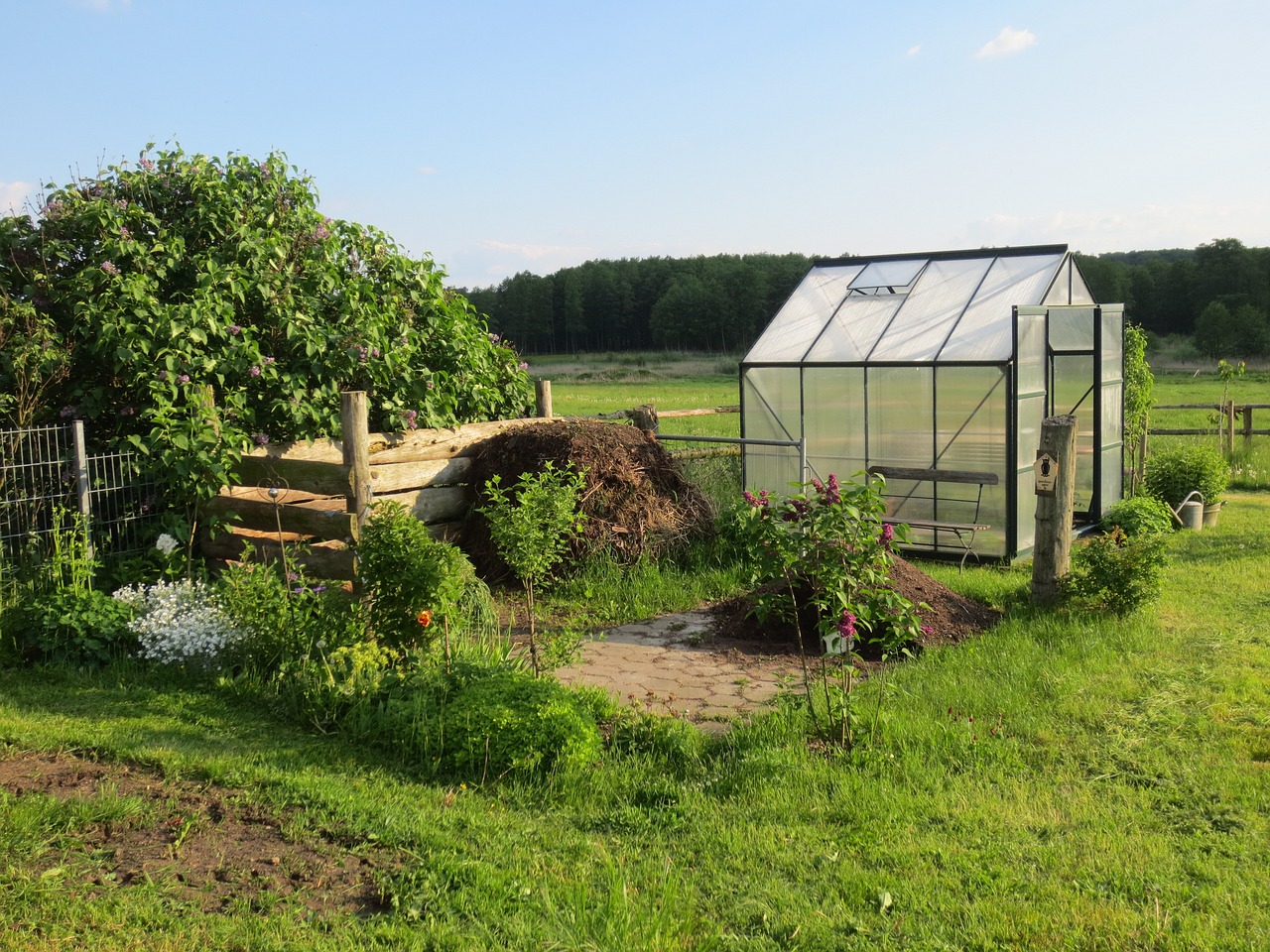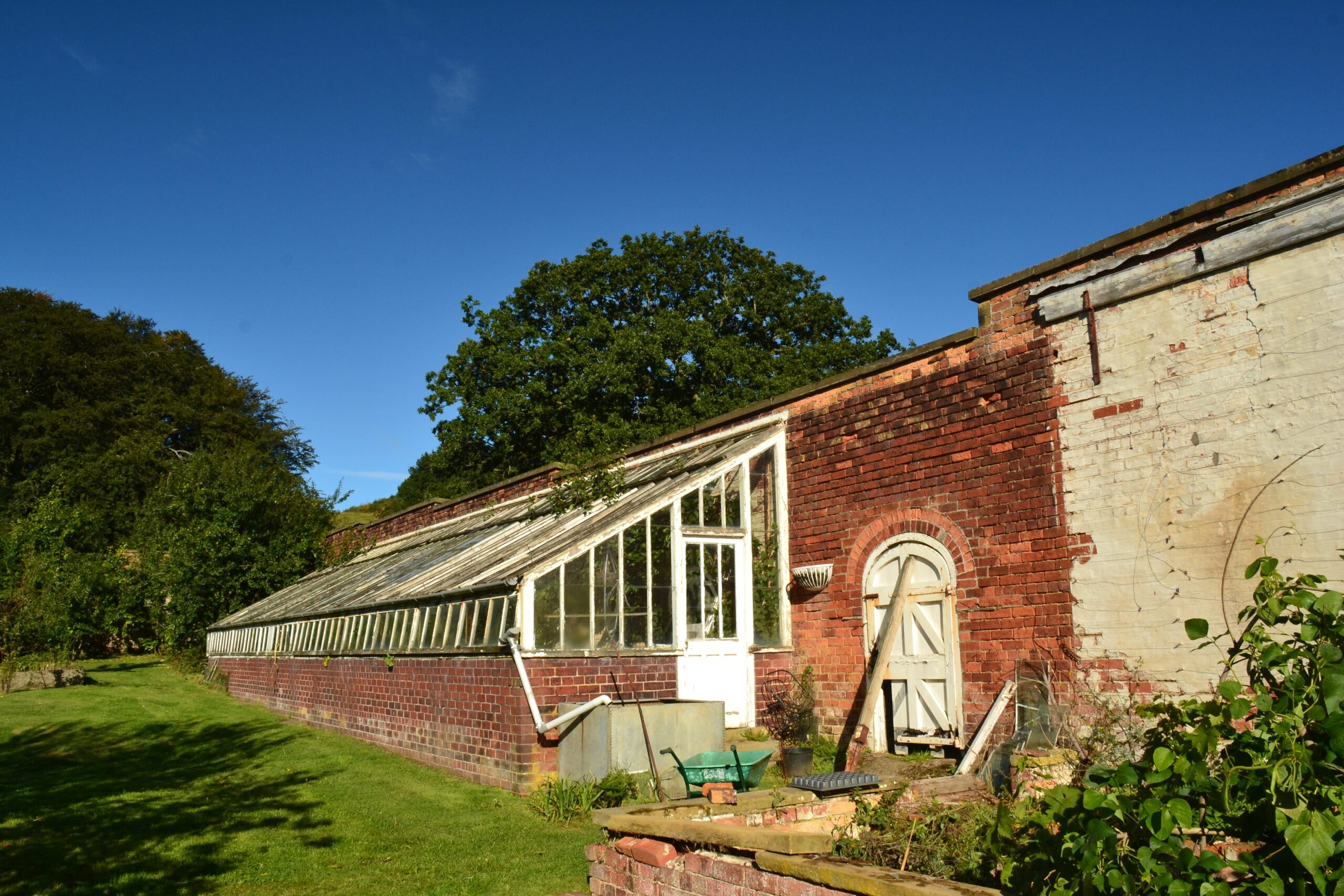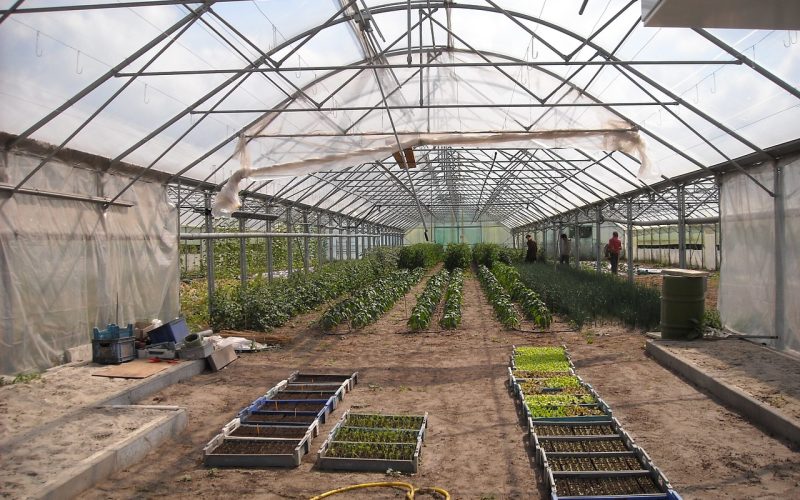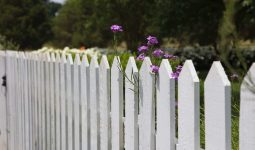As you dive into the world of gardening and plant cultivation, you may come across the term “greenhouse” frequently.
But what is a greenhouse, and how does it contribute to the growth and development of plants?
Definition of a Greenhouse
As the name suggests, a greenhouse is designed to house green, growing things.
It is a building made primarily of transparent material, such as glass or clear plastic, allowing sunlight to enter and warm the interior.
This structure creates a microclimate that can be controlled and manipulated to suit the needs of the plants inside, regardless of the outdoor weather conditions.
The primary purpose of a greenhouse is to provide a controlled environment for plants.
This includes controlling temperature, light levels, and humidity, all of which are vital for plant growth.
A greenhouse allows you to extend the growing season, grow plants that wouldn’t otherwise survive in your climate, and protect your plants from pests and diseases.
To understand more about how a greenhouse accomplishes these objectives, refer to our article on how does a greenhouse work.
History and Evolution of Greenhouses
The concept of greenhouses has been around for centuries.
Early versions of greenhouses were used in Rome as far back as AD 30 to grow cucumbers for Emperor Tiberius. However, these were not like the greenhouses you see today.
In the 17th century, greenhouses began to appear in Europe to house the exotic plants brought back by explorers.
These structures were initially called orangeries, as they were used to grow citrus fruits in colder climates.
The design and materials used in greenhouses have evolved significantly over the years.
The first greenhouses were made of oiled cloth or animal horn, but these materials were later replaced by glass as it became more widely available.
Today, greenhouses can be constructed from various materials, including glass, polycarbonate, and various types of plastic.
For more information on the different materials used in greenhouses, you can read our article on what is a greenhouse made of.
Greenhouses now come in all shapes and sizes, from small indoor greenhouses to large commercial structures, and are used for a variety of purposes, including research, commercial plant production, and home gardening.
As you continue your journey in understanding greenhouses, remember that the basic concept remains the same: creating the ideal environment for plant growth.
The Science Behind Greenhouses

The essential science of what is a greenhouse and how it functions is rooted in the greenhouse effect and the role of sunlight.
Greenhouse Effect Explained
The greenhouse effect is a natural phenomenon that greenhouses utilize to create an optimal environment for plant growth.
In simple terms, it’s the process of heat retention within a confined space.
When sunlight enters the greenhouse through the transparent walls and roof, it’s absorbed by the plants, soil, and other objects within.
This energy is then converted into heat, which warms the interior of the greenhouse.
This heat is trapped within the greenhouse despite the exterior temperature, thereby maintaining a consistent and warmer climate inside.
This principle is similar to how the Earth’s atmosphere works, trapping solar radiation to keep our planet warm.
In the context of a greenhouse, this effect provides a controlled environment for plants to thrive, irrespective of external weather conditions.
To learn more about how this works, check out our article on how does a greenhouse work.
Role of Sunlight in a Greenhouse
Sunlight plays a crucial role in a greenhouse’s operation. The sun’s rays provide the energy needed for photosynthesis, a process in which plants convert light energy into chemical energy (glucose) for growth and development.
The quantity and quality of light a greenhouse receives can significantly affect the productivity and health of the plants within.
Ideally, a greenhouse should receive at least six hours of direct sunlight per day.
However, different plants have different light requirements, so it’s important to consider this when choosing plant species for your greenhouse.
Moreover, sunlight is the primary source of heat in a greenhouse.
As mentioned above, the heat generated by the sun’s rays is trapped within the greenhouse, creating a warm environment conducive to plant growth, even in colder seasons.
However, too much sunlight and heat can also be detrimental, potentially leading to overheating and damage to the plants.
Therefore, regulating the temperature and ensuring adequate ventilation in a greenhouse is critical.
For guidance on maintaining the right temperature in your greenhouse, see our articles on how to heat and cool a greenhouse.
Understanding the science behind greenhouses allows you to maximize their benefits, leading to healthy and productive plant growth.
Whether you are a seasoned gardener or a beginner, knowledge of these principles can help you make the most of your greenhouse experience.
Types of Greenhouses

Understanding the different types of greenhouses can help you decide what is the best for your specific needs.
The materials used in the construction of a greenhouse significantly influence its performance and utility.
Here, we explore glass greenhouses, polycarbonate greenhouses, and plastic greenhouses.
Glass Greenhouses
Glass greenhouses are the traditional choice when it comes to constructing a greenhouse.
These structures are typically made entirely of glass, which allows for optimal sunlight penetration.
This makes them an ideal choice for plants that require a lot of light.
However, glass greenhouses can be expensive to build and maintain due to the cost of the glass and the need for a sturdy frame to support it.
Glass greenhouses are also less efficient at retaining heat, which can be a disadvantage in colder climates.
However, this issue can be mitigated with proper heating and insulation. Visit our article on how to heat a greenhouse for more information.
Polycarbonate Greenhouses
Polycarbonate greenhouses are a popular alternative to glass greenhouses.
Polycarbonate is a type of plastic that is both lightweight and durable, making it an excellent choice for greenhouse construction.
It also has better insulation properties than glass, allowing for more efficient heat retention.
One of the advantages of polycarbonate greenhouses is their resistance to damage.
Unlike glass, polycarbonate is virtually unbreakable, reducing the risk of damage from hail, falling branches, or other impacts.
Furthermore, polycarbonate greenhouses are typically easier to assemble and less expensive than their glass counterparts.
Plastic Greenhouses
Plastic greenhouses, also known as polytunnels, are the most affordable option for greenhouse construction.
They are typically made from a plastic film stretched over a metal or plastic frame.
These greenhouses are easy to assemble and disassemble, making them a great choice for gardeners who need a flexible and portable solution.
While plastic greenhouses do not offer the same level of durability as glass or polycarbonate, they can be a cost-effective option for temporary or seasonal use.
The plastic film used in these greenhouses can deteriorate over time due to UV exposure, but it can be easily replaced when necessary.
For more information on using and maintaining plastic greenhouses, check out our articles on what plastic to use for greenhouse and how to clean greenhouse plastic.
In conclusion, choosing between glass, polycarbonate, and plastic greenhouses depends on various factors, including your budget, climate, and specific gardening needs.
By understanding the pros and cons of each type, you can make an informed decision that best suits your needs.
The Function of a Greenhouse
Understanding the utility of a greenhouse is crucial to making the most of its capabilities.
This section illuminates the primary functions of a greenhouse, which include promoting plant growth and development, extending the growing season, and providing protection from pests and erratic weather conditions.
Plant Growth and Development
One of a greenhouse’s main functions is to foster plant growth and development.
By creating a controlled environment, a greenhouse allows you to create optimal conditions for your plants to thrive.
A greenhouse’s controlled temperature, humidity, and light levels offer a stable environment that can expedite plant growth and yield more robust plants.
In a greenhouse, you can control the amount of sunlight your plants receive, which is crucial for photosynthesis.
Enhanced sunlight exposure can lead to more efficient photosynthesis and healthier plants.
If you’re interested in understanding more about the role of sunlight in a greenhouse, check out our article on how a greenhouse works.
Extending the Growing Season
A greenhouse also functions to extend the growing season.
By manipulating the internal environment, greenhouses enable you to grow plants year-round, regardless of the external weather conditions.
This means you can harvest crops that would typically not survive in your local climate, thus extending their growing season.
For instance, if you live in a region with a cold climate, a greenhouse can provide a warm environment that allows you to grow warm-weather crops like tomatoes and cucumbers during the colder months.
To maintain a warm temperature inside the greenhouse during winter, you might find our article on how to heat a greenhouse helpful.
Protection from Pests and Weather
Finally, a greenhouse shields plants from harmful pests and unpredictable weather conditions.
A well-constructed greenhouse can prevent pests like aphids and caterpillars from accessing your plants, thereby reducing the risk of disease and damage.
Similarly, greenhouses offer protection against adverse weather conditions like frost, hail, heavy rain, and strong winds.
This protective function ensures that your plants remain healthy and undamaged, irrespective of the weather outside.
For information on building your own sturdy and protective greenhouse, you can read our guide on how much does it cost to build a greenhouse.
In summary, a greenhouse is valuable for any gardener or farmer.
By understanding its functions and learning how to manipulate the greenhouse environment effectively, you can grow a variety of plants successfully throughout the year.
The Importance of Greenhouse Design

The design of a greenhouse plays a crucial role in its functionality.
By understanding the impacts of orientation, ventilation, and irrigation, you can optimize your greenhouse for maximum productivity and efficiency.
Orientation and Location
The orientation and location of your greenhouse are critical factors in determining how much sunlight your plants will receive.
This is particularly important if you’re growing plants requiring a specific amount of sunlight daily.
In general, greenhouses should be oriented so that the longest side faces the equator.
This maximizes sunlight exposure throughout the day.
Furthermore, consider placing your greenhouse in a location that’s free from shadows caused by trees or buildings.
While the optimal greenhouse orientation and location may vary based on your geographical location and the type of plants you’re growing, the goal is to ensure that your plants receive enough sunlight for photosynthesis.
For a more in-depth understanding of the role of sunlight in a greenhouse, you can read our article on how a greenhouse works.
Ventilation and Temperature Control
Proper ventilation and temperature control are key elements in greenhouse design.
A well-ventilated greenhouse ensures that fresh air circulates throughout the structure, providing plants with the carbon dioxide they need for photosynthesis.
Moreover, temperature control is crucial as too much heat can damage plants.
During the summer months, you may need to use shades or fans to keep the temperature in check.
Conversely, during the winter, supplemental heating may be necessary.
For more information on controlling greenhouse temperature, consider reading our articles on how to heat and cool a greenhouse.
Irrigation and Humidity Control
Lastly, irrigation and humidity control are essential elements in greenhouse design.
Maintaining the right level of moisture in the soil and the air is crucial for plant health.
Some greenhouses use automated irrigation systems to ensure that plants receive the right amount of water.
These systems can be particularly useful if you’re growing a large number of plants or if you’re not able to water the plants manually on a regular basis.
Humidity control, on the other hand, is important for preventing the growth of mold and other fungi.
Ventilation, as mentioned earlier, plays a significant role in humidity control.
In conclusion, when contemplating what is a greenhouse, the design of the structure is as important as its function.
By optimizing the orientation, ventilation, and irrigation of your greenhouse, you can create an environment that promotes healthy plant growth and maximizes your gardening efforts.
Building Your Own Greenhouse

Now that we have established what a greenhouse is and how it works let’s move on to the process of building your own greenhouse.
This venture can be an incredibly rewarding experience, allowing you to maximize your plant-growing potential while also providing a satisfying DIY project.
Essential Steps in Building a Greenhouse
Building a greenhouse involves several key steps, from planning and design to construction and finishing touches.
Here’s a general outline of the process:
- Plan: Outline your requirements, such as the size of the greenhouse, the types of plants you want to grow, and the location where you’ll build it.
- Design: Choose a design that suits your needs and your available space. This includes deciding on the type of greenhouse you’ll build. Learn more about what a greenhouse is made of to help you make an informed decision.
- Prepare the Site: Clear the area where you’ll build your greenhouse and level the ground, if necessary.
- Build the Structure: Construct the frame of your greenhouse according to your chosen design.
- Install Covering: Apply the greenhouse covering, whether it’s glass, plastic, or another material. Our guide on what plastic to use for greenhouse can provide valuable insights if you opt for a plastic cover.
- Set Up Interior: Install shelves, benches, irrigation systems, and other interior elements.
- Install Heating and Cooling Systems: Depending on your location and the plants you want to grow, you might need to control the temperature inside your greenhouse. Check out our articles on how to heat and cool a greenhouse for more information.
Factors to Consider When Building a Greenhouse
When planning your greenhouse, there are several factors to take into consideration to ensure that your greenhouse will meet your specific needs and provide an optimal environment for your plants.
These factors include:
- Location: The location of your greenhouse can significantly impact its efficiency. It should be placed in an area that receives ample sunlight throughout the day.
- Size: The size of your greenhouse should be determined by the variety and quantity of plants you plan to grow and the space available on your property.
- Materials: The materials you choose to build your greenhouse will impact its durability, efficiency, and cost. For information on the costs associated with building a greenhouse, read our article on how much it costs to build a greenhouse.
- Ventilation: Proper ventilation is crucial to maintaining the right temperature and humidity levels in your greenhouse. Consider installing roof vents, side vents, or even automated ventilation systems.
Managing and Maintaining Your Greenhouse
Once your greenhouse is up and running regular management and maintenance are essential to ensure your plants thrive.
This includes regularly checking and adjusting the temperature and humidity levels, inspecting plants for pests or diseases, and cleaning the greenhouse to prevent the buildup of algae or mold.
For tips on how to maintain the cleanliness of a plastic greenhouse, refer to our article on how to clean greenhouse plastic.
Building your own greenhouse can be rewarding, allowing you to cultivate a variety of plants year-round while also offering a satisfying DIY project.
With careful planning, thoughtful design, and regular maintenance, you can create a thriving environment for your plants right in your own backyard.








